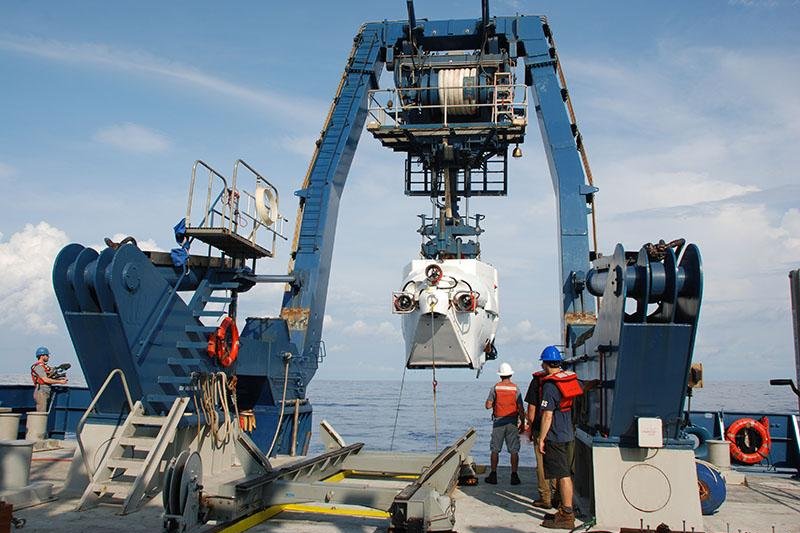1 of 2 | With the help of the underwater submersible Alvin, researchers dove nearly half a mile to the ocean floor, where they discovered an 85-mile cold water coral reef. Photo by DEEP SEARCH/BOEM/USGS/NOAA
Aug. 29 (UPI) -- Researchers have discovered a coral reef off the coast of the Southeastern United States that is dozens of miles long, and thousands of feet underwater.
The newly found reef stretches more than 85 miles in length, and it was found nearly 2,000 feet beneath the surface of the ocean.
Scientists with the Woods Hole Oceanographic Institution and National Oceanic and Atmospheric Administration recently convened 160 miles off the coast of Charleston, S.C., to investigate mysterious underwater mounds and ridges -- features that were identified by researchers working on the NOAA vessel Okeanos Explorer earlier this summer.
During an eight-hour dive to the ocean floor aboard the deep-sea submersible Alvin, scientists confirmed the unusual mounds. They also found a never-ending forest of cold water corals.
"Just mountains of it," Erik Cordes, leader of the dive mission, told the Huffington Post. "We couldn't find a place that didn't have corals."
The newly discovered reef is dominated by Lophelia coral, the most common reef-forming coral in the deep sea. But using Alvin's robotic arms, scientists were able to collect a variety of cold water coral species.
Scientists believe the mounds are formed by the remains of previous generations of coral. The corals are growing on top of their ancestors.
"As Lophelia grows and dies over time, new Lophelia grows atop the old skeletons, forming continuous reef structures that could stretch much farther than we ever imagined on the U.S. East Coast," NOAA wrote in a project update.
Researchers think the reef may be several thousand years old.
"This is a huge feature," Cordes told the Huffington Post. "It's incredible that it stayed hidden off the U.S. East Coast for so long."
Dives will continue through this weekend. The two-week expedition is scheduled to end early next week. The research is part of a larger effort to map unique deep sea geological features along the East Coast.
The research program was organized and funded by NOAA, the Bureau of Ocean Energy Management and the US Geological Survey.
President Trump recently announced plans to open a larger portion of U.S. waters to oil and gas exploration, and ultimately, offshore drilling.
And while the deep sea research effort, called DEEP SEARCH, was planned before President Trump took office, official said the data collected during dives could be used to inform future policies.















